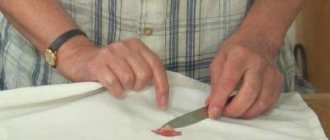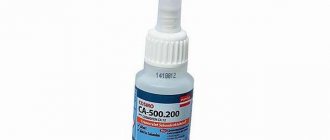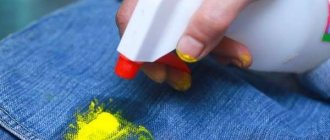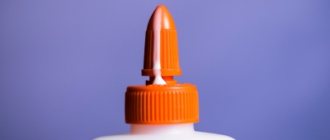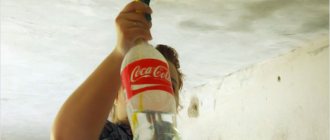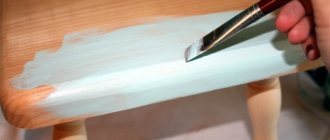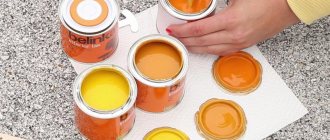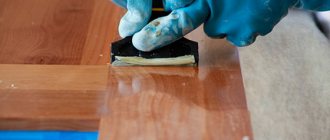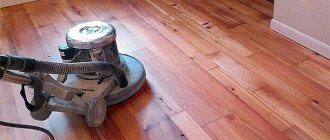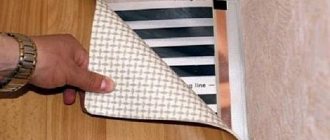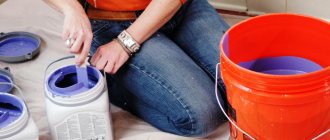How to get rid of hair dye stains on clothes, floors, carpet, furniture, bathrooms and plastic?
Hair coloring is a very delicate and responsible matter. Improper and careless implementation can lead to a lot of trouble. Firstly, the dye can get on the skin and stain it. Secondly, surrounding objects and things, such as clothing, furniture, floors, and carpeting, can succumb to pigmentation. How to deal with such problems? We will try to find an answer to this question.
How and with what to remove hair dye from colored clothes?
How to get rid of hair dye stains on colored clothes?
- Fresh hair dye that has not been absorbed into clothing can be removed immediately by rinsing thoroughly. After the stain has disappeared, the item must be washed in a washing machine with the appropriate type of washing powder or laundry soap.
- Today on sale you can find special stain removers designed for colored laundry. This product must be used strictly in accordance with the instructions.
- Fresh hair dye on fabric can also match regular hairspray. It must be sprayed onto the stain and rubbed thoroughly. Immediately after manipulating the varnish, clothes must be washed in a washing machine or with laundry soap.
- Hydrogen peroxide is very effective in combating hair dye stains on clothes. This product just needs to be applied to the stain and wait about half an hour. After exposure to peroxide, the item must be washed.
- An analogue of hydrogen peroxide can be table vinegar 9 percent. This remedy must also be poured directly onto the affected area and wait up to half an hour. After rinsing vinegar from clothes, you need to wash them in a machine or by hand (with laundry soap).
- As we all know, the best means for removing paint are various solvents, nail polish remover, kerosene, gasoline or acetone. A similar product must be applied to a sponge or other cloth and rubbed onto the stain. After treatment with such substances, clothes must be washed.
Attention! It is advisable to test any of the listed products before using them on colored fabrics. To do this, you need to pour a little substance onto a piece of fabric hidden from human eyes. After waiting the required half hour, you need to draw conclusions whether the product has damaged the fabric itself or whether its color has deteriorated. If changes in the structure or color of the material have been recorded, it is better to refuse to use such a product, as it can completely ruin the thing. In such cases, it is recommended to contact specialized establishments - dry cleaners.
On jeans
It is more difficult to wash paint stains on jeans: it is a rough but loose fabric that quickly absorbs dirt. In addition, it is almost always colorful and sheds easily. The following products will remove stains on denim:
Tips from Chistyuli will save your favorite jeans!
- Turpentine for old and difficult to remove stains. Moisten the paint generously with cotton wool soaked in turpentine. Once the dye is gone, wash your jeans.
- For white jeans. Prepare a homemade stain remover using this recipe: refined gasoline (kerosene) and chalk (kaolin) in a 1:1 ratio. Apply thickly to the dirt. After 15-20 minutes, brush the stain with a brush. Wash and rinse to remove chalk residue. Wash in a machine with aromatic conditioner (to remove the smell of gasoline, kerosene).
- Acetone (must be tested on an inconspicuous area). Soak a rag in acetone and apply to the stain. Leave for 15-20 minutes. Clean off any remaining paint. Do the laundry.
- We remove stubborn stains. Treat the contaminated area with warm glycerin. Gently rub it into the fabric. Apply 9% vinegar to the stain. Wash this area with soap. Then wash the entire item.
How and with what to remove hair dye from white clothes?
How to get rid of hair dye stains on white clothes?
Colorless or white fabrics are less delicate than colored ones - when working with them, the risk of color loss is reduced to zero. That is why any of the products suitable for colored products can be used for this type of clothing. You can also remove hair dye stains from white clothes using more radical and stronger means:
- The good thing about white fabrics is that you can use bleaches on them. Bleach will help remove any type of stain and return your clothes to their original white color. The only drawback of this product is its destructive effect on the structure of the material. It is advisable to read the algorithm of actions when working with bleach on the label of a specific product.
- Antipyatin soap has proven itself very well in the fight against stains of various types for white linen. It is also better to use it in accordance with the instructions on the package.
- If you don’t have industrial means of dealing with hair dye stains at hand, you can use the folk method of getting rid of them. To do this, you need to apply glycerin to the contaminated area and rub it. After glycerin therapy, it is advisable to rinse the fabric. The next step is to apply a saline solution and 9% table vinegar to the stain. After a couple of minutes, traces of paint should evaporate. If this does not happen, then you can use heavy artillery - a 10% ammonia solution. Ammonia must be applied to the fabric, wait a few minutes and put the item in the washing machine or wash it by hand using laundry soap.
- An analogue of industrial bleach can be a home remedy consisting of 3.5 liters of cold water and 1/4 cup of bleach. By soaking white clothes in a similar solution, you can not only whiten them, but also remove unwanted stains from hair dye.
- Another effective way to combat serious stains is a hot mixture of hydrogen peroxide and ammonia. To prepare it, you need to add a tablespoon of both ingredients to a glass of water. Dip a cotton pad into an explosive mixture heated to 60 degrees and apply it to the stain. When the solution is completely absorbed into the material, it must be rinsed thoroughly. The rinsed item simply remains to be washed.
Note! When working with cotton fabrics, ammonia should be used only in diluted form. To do this, it is advisable to soak the item in water with a few drops of ammonia solution for a couple of minutes. After the specified period, the clothes must be washed.
A few words about linoleum and the features of its operation
The word "linoleum" comes from the Latin linum - linen, linen and oleum - oil. Nowadays, it is mainly made from polymer materials, practical and inexpensive, due to which it has many advantages:
- resistance to humidity, temperature, and many mechanical influences;
- ease of maintenance during operation;
- low price;
- ease of installation;
- durability;
- high heat and sound insulation properties.
Such a popular and versatile material could not go unnoticed by optimizers, and now there are several types of linoleum on the market, divided by manufacturing method.
- Natural linoleum is durable, wear-resistant, and environmentally friendly. It has fire resistance and antistatic properties. Located in a higher price position relative to other types.
- Polyvinyl chloride linoleum (PVC) is the most common and cheapest of all types, very practical and easy to maintain. The only disadvantage that can be noted is that at low temperatures it becomes brittle and loses its ductility.
- Glypthal or alkyd linoleum is inferior to PVC due to its greater fragility: cracks often appear on it. This type is not worth taking for the kitchen and hallway, but it is well suited for the bedroom.
- Linoleum relin, or rubber, is plastic and waterproof. It consists of two layers, the total thickness of which is from 3 to 6 mm.
- Colloxylin linoleum is made from nitrocellulose, which provides the coating with flexibility and moisture resistance, while at the same time imparting a characteristic shine. This type is not fire-resistant, so it has no place in the kitchen.
Linoleum is also divided into 2 types according to the presence or absence of a base. The coating without a base consists of several layers and is highly wear-resistant. There is a wide range of colors and patterns. The base material can be of two types:
- with a foam base - very flexible linoleum, with high durability, suitable for residential premises and has a large palette of colors and patterns;
- on a fabric (jute) basis - suitable for rooms where large crowds of people are not expected and good thermal insulation is required; the wear resistance of the coating depends on the thickness of the protective layer.
How to remove hair dye from carpet?
How to remove hair dye stain from carpet?
- If a hair dye stain has just formed, you can try to wipe it off with a damp cloth (preferably alcohol).
- If you couldn’t get rid of the blot with a napkin, you should try wiping it off with a sponge and soapy water. In this case, you will have to apply the sponge until the stain disappears.
- The third method is more radical. To use it, you need to dissolve a tablespoon of dishwashing detergent and table vinegar in 2 glasses of cold water. You need to wet a sponge in the resulting solution and wipe the stain on the carpet with it. It is advisable to blot the stain with a dry white rag each time after sponging in order to absorb the paint. When the blot begins to disappear, you will need to wet the sponge in clean cold water and apply it to the same place, each time blotting it with a dry, clean rag. In the most advanced cases, you can additionally treat the stain with a sponge with alcohol, alternating it with a dry cloth.
- The fourth method is very similar to the third. The only difference is that instead of vinegar, a tablespoon of ammonia is added to the soap solution. When dipping a sponge into this solution, it must be applied to the stain every 5 minutes, blotting it with a dry cloth. After half an hour, it is advisable to wipe the blot with a sponge dipped in clean cold water and dry it with a clean cloth.
- The most radical method of cleaning carpets from hair dye stains is the method of using hydrogen peroxide. This substance must be dropped from a pipette onto the blot and left for a day. If after the specified time the stain has not disappeared, you can try repeating the procedure again.
Note! When using any of the methods (vinegar, ammonia, hydrogen peroxide), it is recommended to first test on a hidden area of the carpet. To do this, you need to drop the product onto such an area and leave it for at least half an hour to an hour. If after the specified period of time the carpet has not lost its color and its structure has not been damaged, then you can try the product on the front part of the carpet.
Useful tips
Simple rules will help preserve the beauty and cleanliness of linoleum.
- To protect against contamination, linoleum should be regularly treated with special household products. For example, it can be rubbed with special mastics that do not cause a slip effect, or you can use drying oil and linseed oil. Polishes create an additional protective barrier on the surface of the floor covering; if ink spills on the floor, it will be absorbed more slowly, and it will be easier to wipe it off.
- If pen ink gets on the floor, you must immediately begin removing the stain. You can’t put off cleaning - even in a couple of hours, the handle will be absorbed into the floor covering so that it will be very difficult to wipe it off.
It happens that even the most thorough treatment does not completely remove the stain from the floor. In this case, you can use the following method - take a piece of linoleum with a similar color and pattern and cut out an area from it that is slightly larger in size than the area of contamination.
A piece of fresh linoleum is placed on top of the stain, pressed tightly, and then a sharp stationery knife is used to cut the bottom layer of coating along the edges of the piece. After this, the cut-out piece with ink stains on the bottom will remain to be removed, and in its place, fresh, clean linoleum will be inserted exactly along the contours. The edges of the “patch” need to be treated with fine sandpaper, lightly coated with glue and pressed down properly so that the piece is fixed in the right place.
How to remove hair dye from furniture?
How to get rid of hair dye stains on furniture?
- You can remove hair dye stains from upholstered furniture using a damp cloth. True, this method will only be appropriate if the stain is fresh.
- If a blot placed on upholstered furniture has already become embedded in it, then you will have to suffer a little. First, the pigmented area of the fabric will need to be rubbed with a sponge and soapy water. Then the stain must be filled with warm (heated in the microwave or steamed) glycerin. A solution of ammonia and salt will help remove residual glycerin from the material.
- You can get rid of hair dye stains from cabinet furniture using any of the strong agents: special hair dye removers or “Lokon”, acetone, solvent, nail polish remover, chlorine-containing liquids (bleach, Domestos, Toilet Duck, etc. ), vinegar, ammonia, hydrogen peroxide, citric acid, etc.
- It is first recommended to test any of the products on an inconspicuous area of the furniture in order to make sure that the product will not corrode the surface and discolor it.
How to remove hair dye from the floor?
How to remove hair dye stain from floor?
If the floor covering has been damaged by a hair dye stain, then depending on the material it is made of, you can try the following remedies:
- The tiles can be scrubbed with any of the existing aggressive agents: acetone, solvent, Lokon, acid, chlorine and all their derivatives.
- It is better not to scrub parquet or wooden floors coated with varnish with acetone-containing products, as there is a risk of removing the coating itself.
- An effective remedy in this case is considered to be a tandem of Pemolux soda 5 and nail polish remover without acetone - with the help of a sponge and these products, paint can be easily removed from the floor surface.
- The curling product “Lokon” also works well on hair dye stains on a wooden surface. After applying it to a sponge, you simply rub the stain and wash it off with a clean cloth.
Removing Dried Stains
When stains dry, they become resistant to chemicals and acids, so even with prolonged rubbing or washing, they will leave an unattractive mark.
Aggressive solvents remove any paint
Old stains can be removed using aggressive means:
- turpentine;
- gasoline;
- kerosene.
They will clean linoleum, clothes, and parquet well. But use them with caution, as the products harm the structure of the fabric and can discolor the surface. Do not leave furniture or floors treated for longer than 5 minutes. Be sure to monitor the stain removal process and then wash off with powder.
How to remove hair dye from plastic?
How to get rid of hair dye stains on plastic?
- An excellent means of removing hair dye from plastic surfaces is white spirit, acetone, thinner, kerosene, gasoline and other similar products.
- Also, many types of plastic are not afraid of the effects of acid - vinegar, citric acid, and other bathroom and kitchen products containing acids can be used on such surfaces.
- Chlorine-containing compounds can help remove hair dye stains from a plastic surface - Domestos, Toilet Duck, bleach (if the plastic is white), various cleaning products with chlorine.
How to remove hair dye from linoleum?
How to get rid of hair dye stains on linoleum?
In order to remove hair dye from linoleum, you must first try to remove the stain with a regular damp sponge. If the sponge cannot cope with this task, then you can try using a solution of ammonia and hydrogen peroxide. A similar solution must be applied to a clean cloth, rub the paint with it, and then rinse thoroughly with a clean cloth.
So…
Dear Clean! Be beautiful
